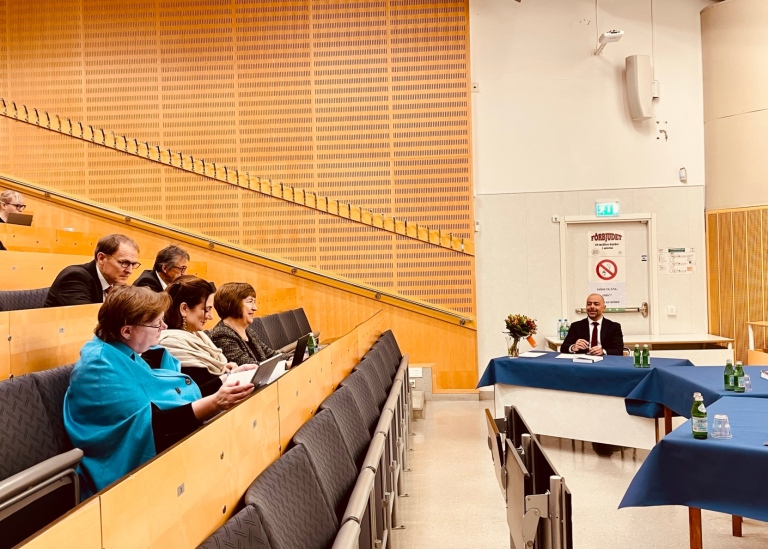New dissertation on international arbitration law
In a new dissertation, titled "Early Determination of Arbitral Jurisdiction: Balancing efficacy, efficiency, and legitimacy of arbitration", Dr Fabricio Fortese examines the timing of judicial determination of jurisdictional disputes in the presence of an arbitration agreement.

This dissertation examined the timing of judicial determination of jurisdictional disputes in the presence of an arbitration agreement. The main research question addressed was about ‘when’ a court should exercise its authority with conclusive effects to settle jurisdictional disputes.
The analysis focused on Article 8(1) of the Model Law, which addresses the scenario where a party seeks to litigate a substantive dispute that should be arbitrated. In that scenario, Article 8 imposes the conditions and lays out the exceptions for national courts to discontinue the litigation and refer the parties to arbitration. The research question arose because the interpretation and application of Article 8(1) are not uniform across jurisdictions.
The conclusions in Fabricio Fortese’s study depart from previous publications, many of which rely on and reflect general policies and pragmatic solutions favouring arbitration. Some have concluded that the Model Law imposes on national courts the obligation to undertake a limited (prima facie) review of the arbitration agreement and the objection to the arbitral tribunal's jurisdiction. The opposite interpretation and approach require that national courts fully examine the existence and validity of the arbitration agreement, and ultimately decide the jurisdictional dispute. Intermediate positions stem from these two approaches and operate as exceptions for these main propositions.
Showing that no approach is imposed
Fabricio Fortese’s work examined and answered the ‘when’ question from an autonomous legal interpretation perspective, detached from a given State's law, concepts, and rules. The main finding of this dissertation is that the text of Article 8, read in its context and in light of its purpose, does not impose or require one approach and excludes the other. On the contrary, this dissertation concludes that no approach is imposed; both are permitted. Applying one or the other approach is a matter of judgment (rather than opinion), based on the particularities of the case, and aiming to achieve the fair and efficient resolution of the jurisdictional and substantive dispute.
This study highlights that for an early settlement of jurisdictional disputes, the Model Law drafters breathed synergy -rather than jealousy- into the relationship between courts and arbitrators. The synergic dynamic between judicial and arbitral authorities serves to achieve the instrument’s legislative purpose. That is, to facilitate the fair and efficient settlement of disputes in international commercial relations through arbitration.
About the Public defence
Opponent was George A. Bermann, Professor of Law at Columbia Law School, USA.
The examining committee consisted of Professor Andrea Bjorklund, McGill University (Canada), Professor Catherine Rogers, Bocconi University (Italy) and Professor Antonina Bakardijeva Engelbrekt, Stockholm University.
The supervisor and chair of the dissertation was Associate Professor Patricia Shaughnessy, Stockholm University. Co-supervisor was Professor Stefan Kröll, Bucerius Law School (Germany).
Last updated: November 25, 2022
Source: SU Law


